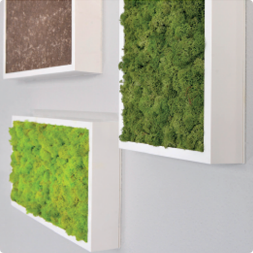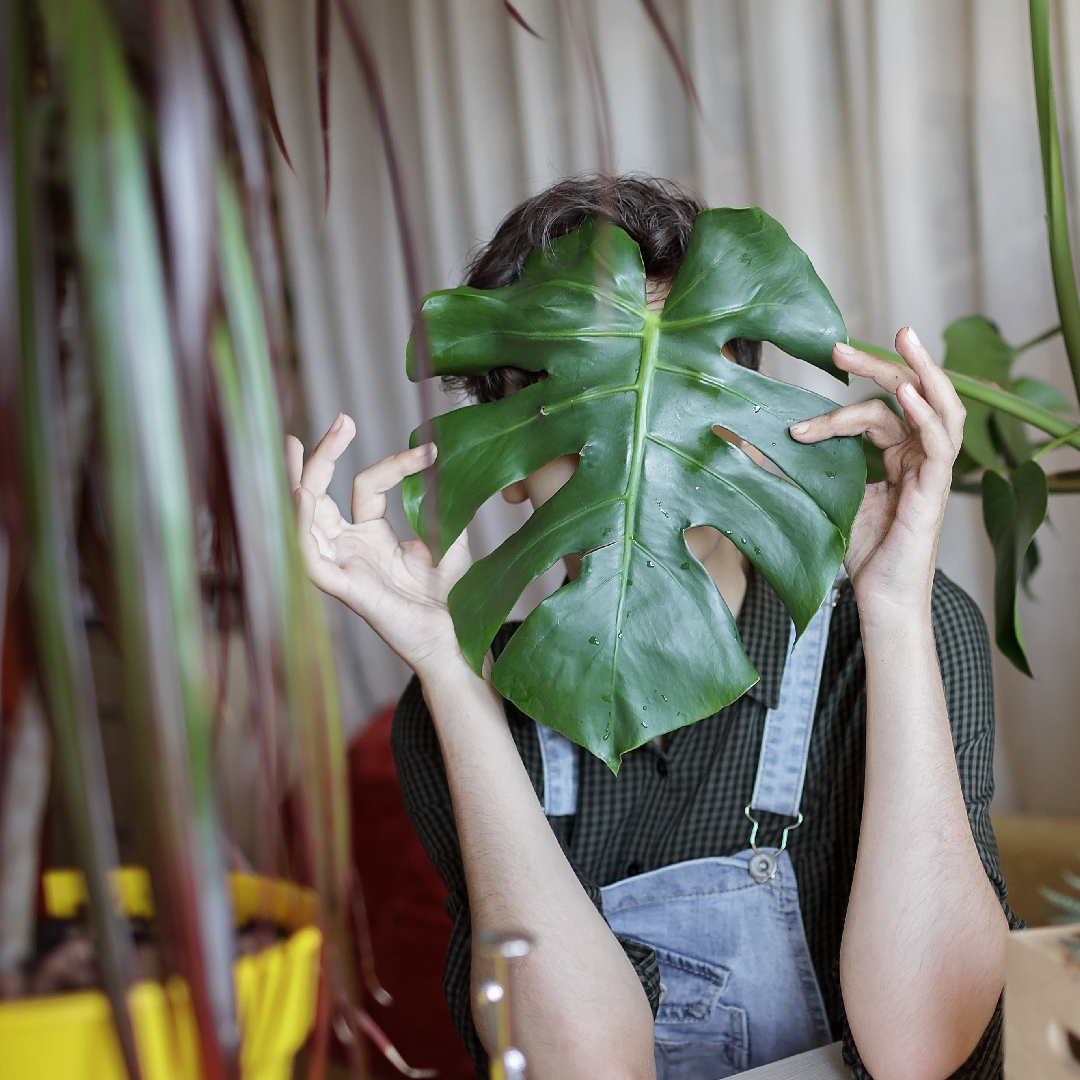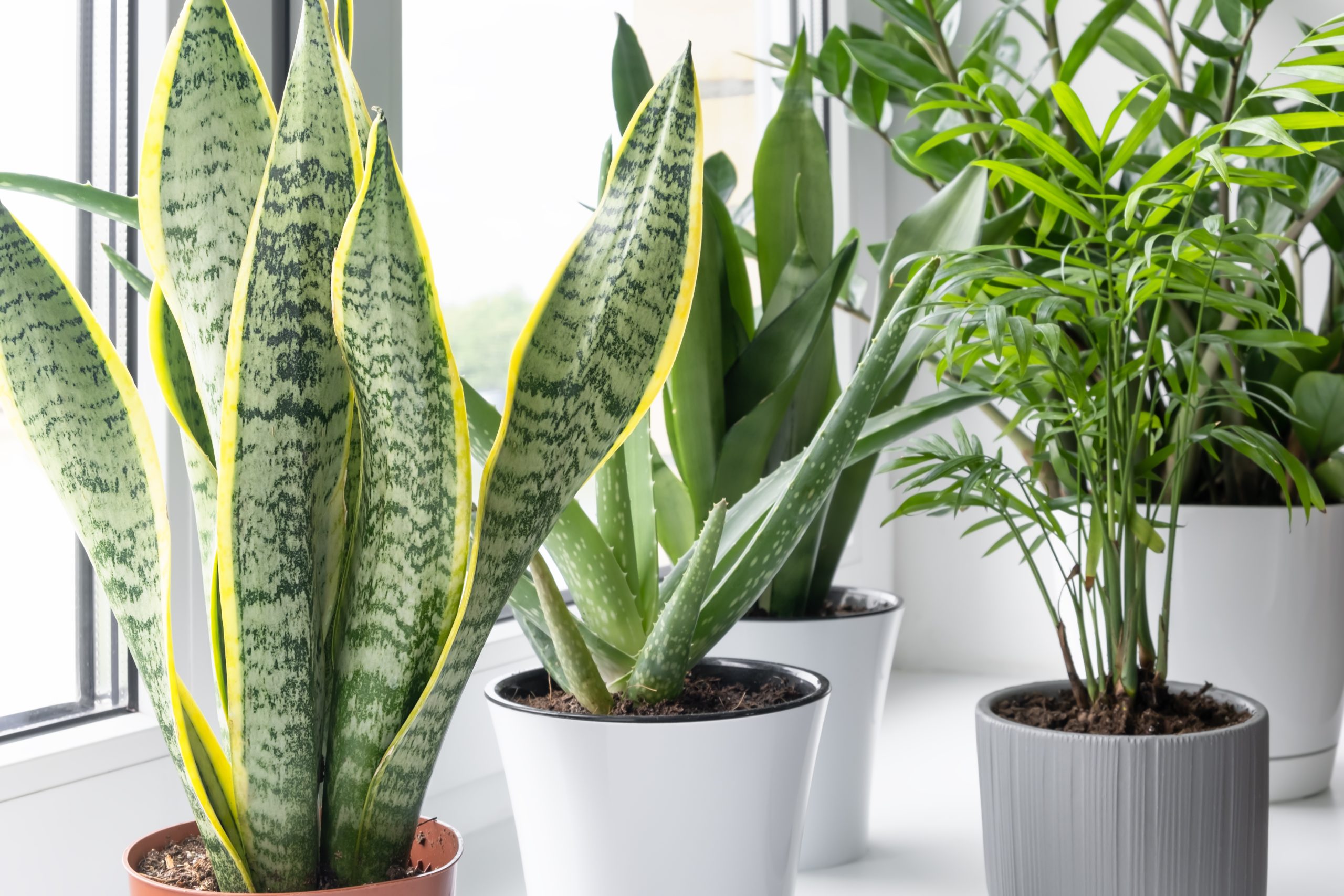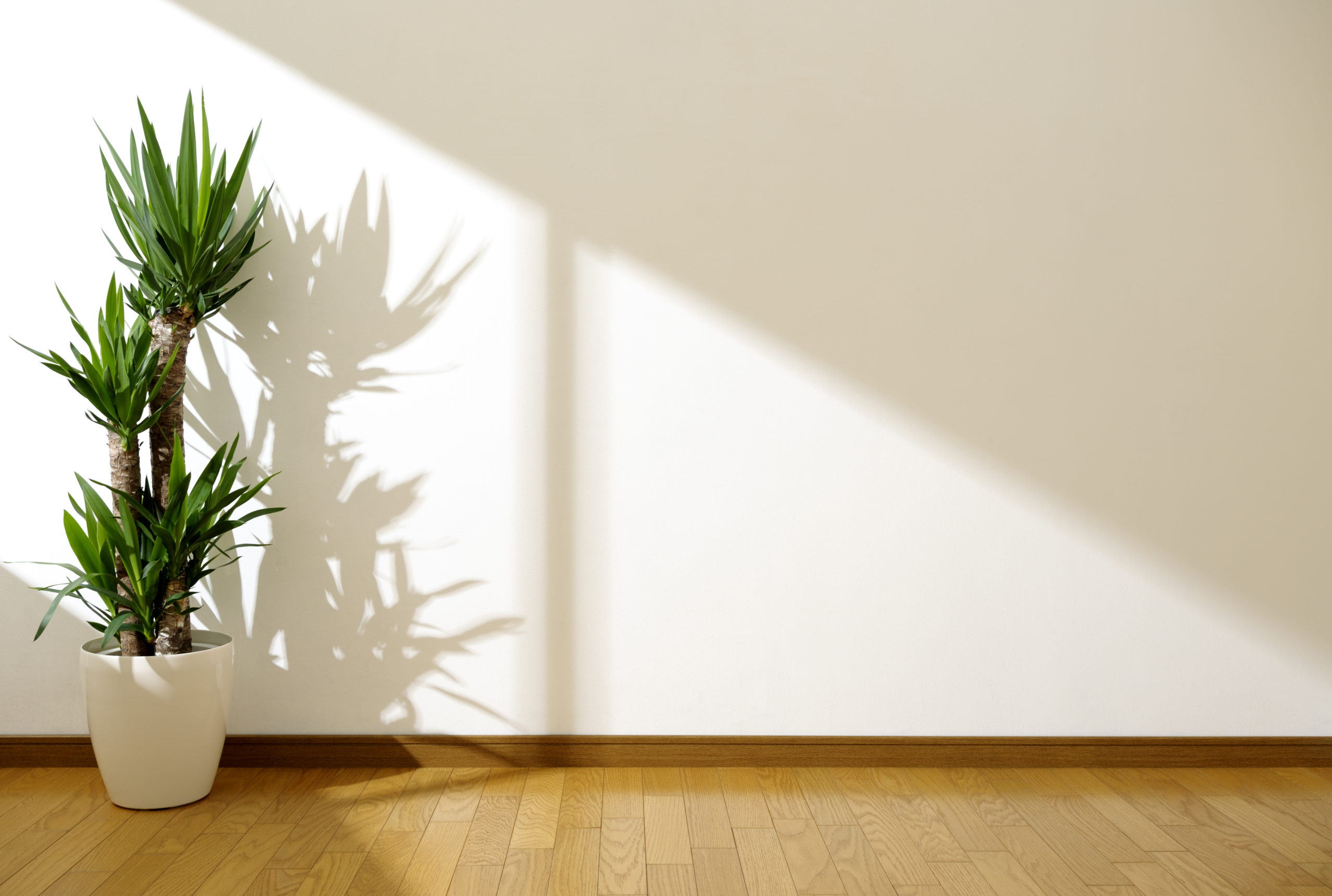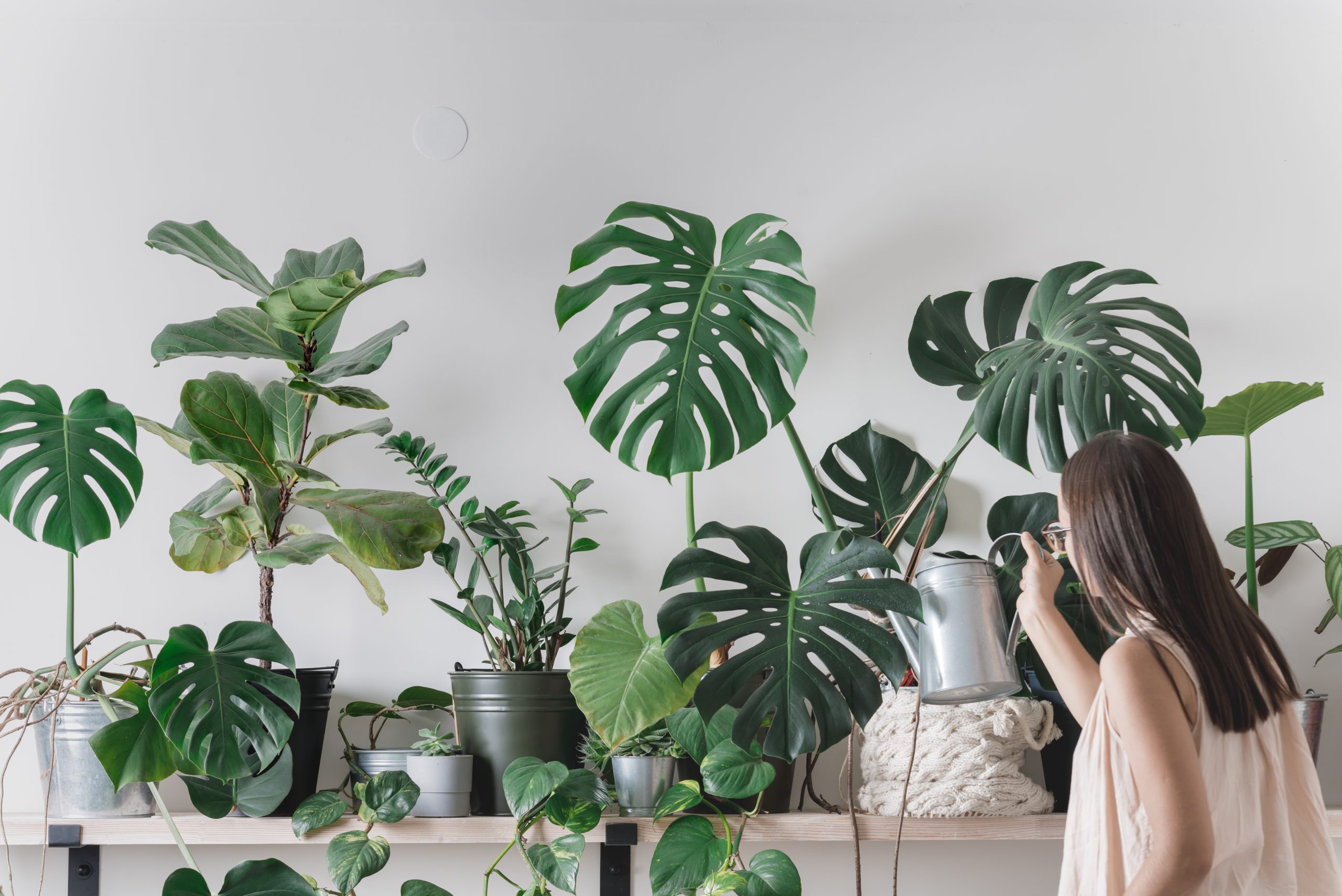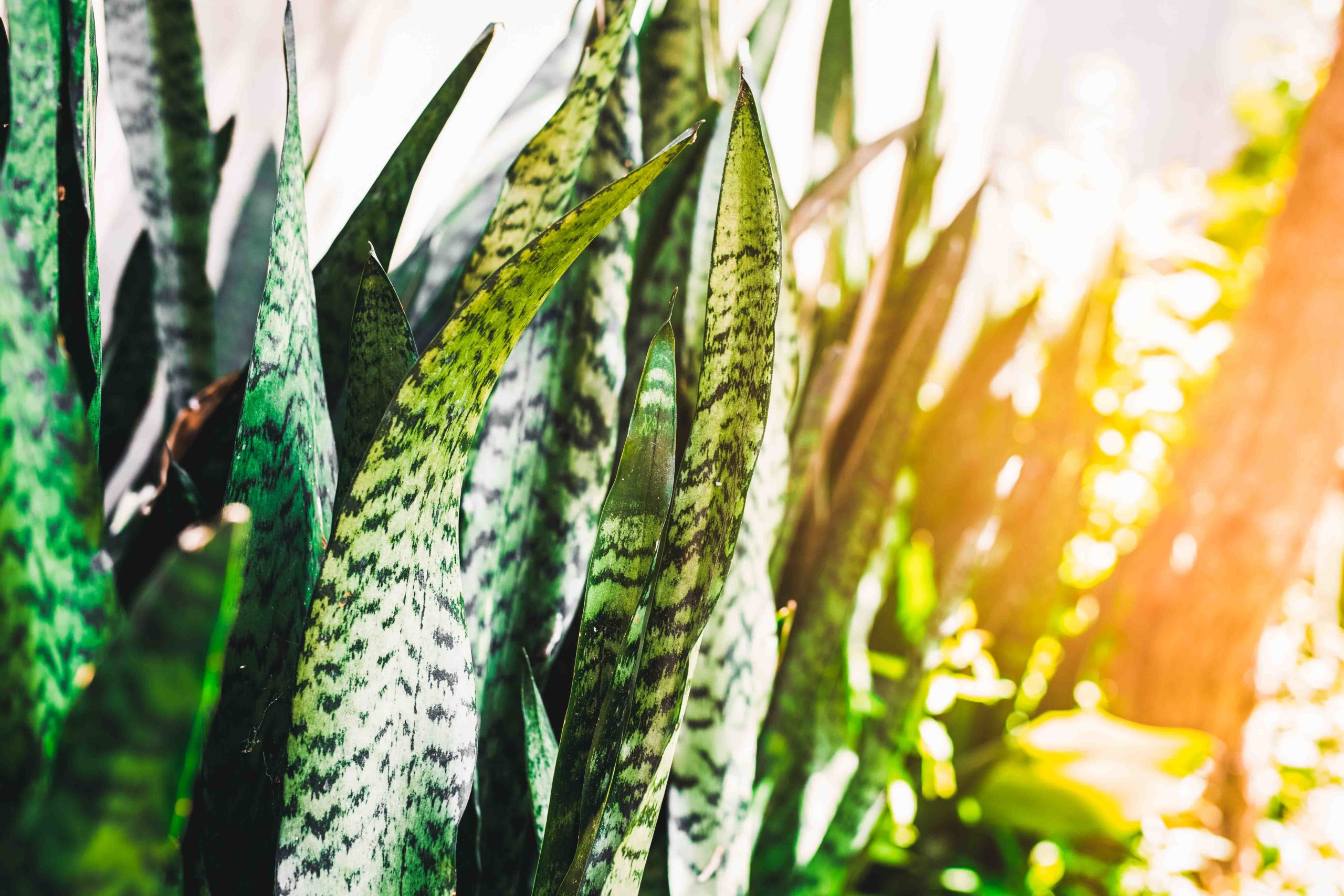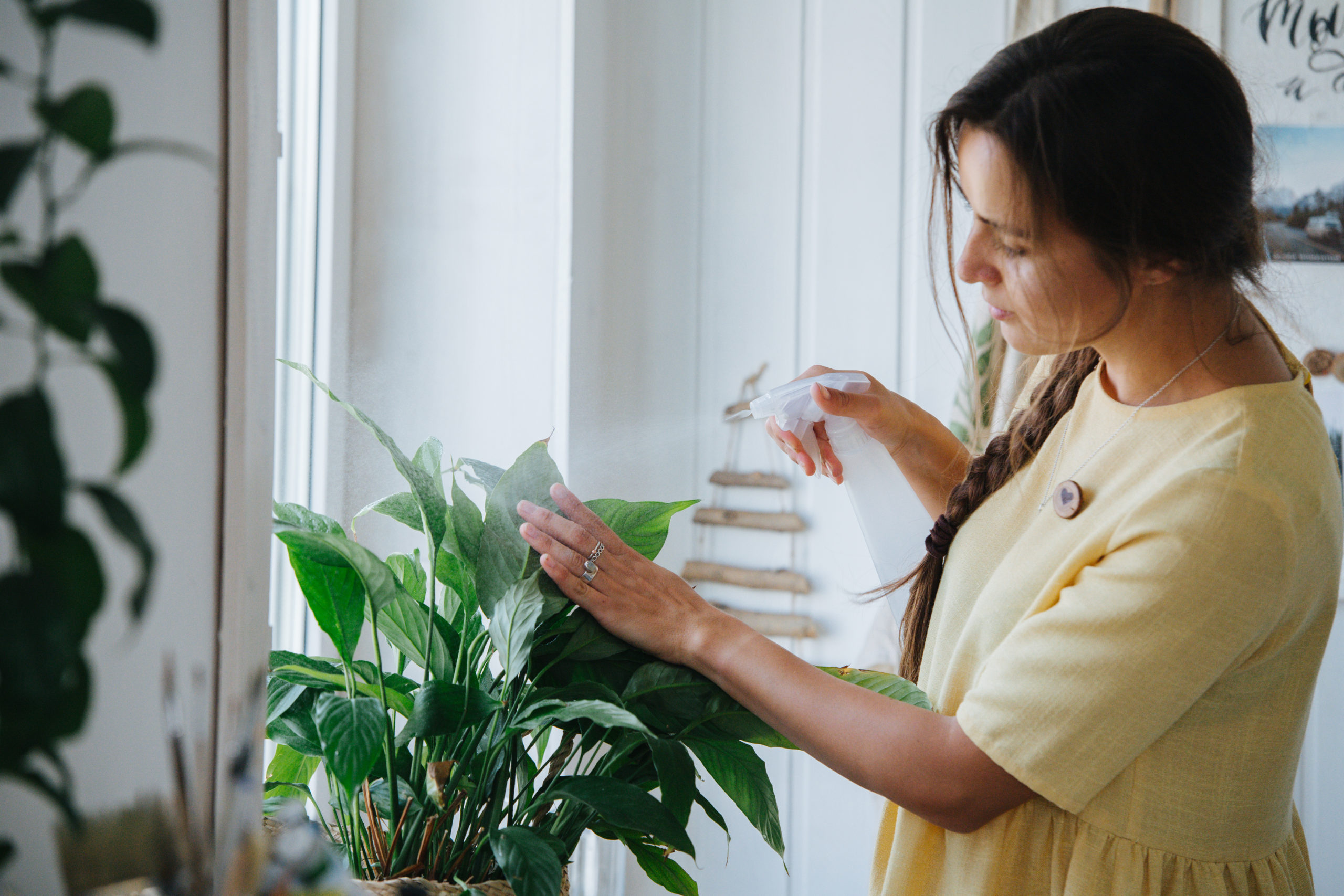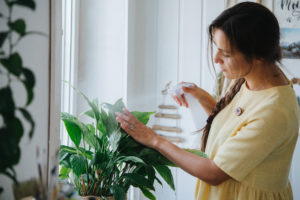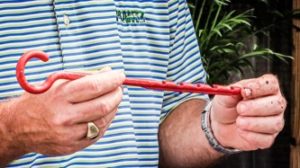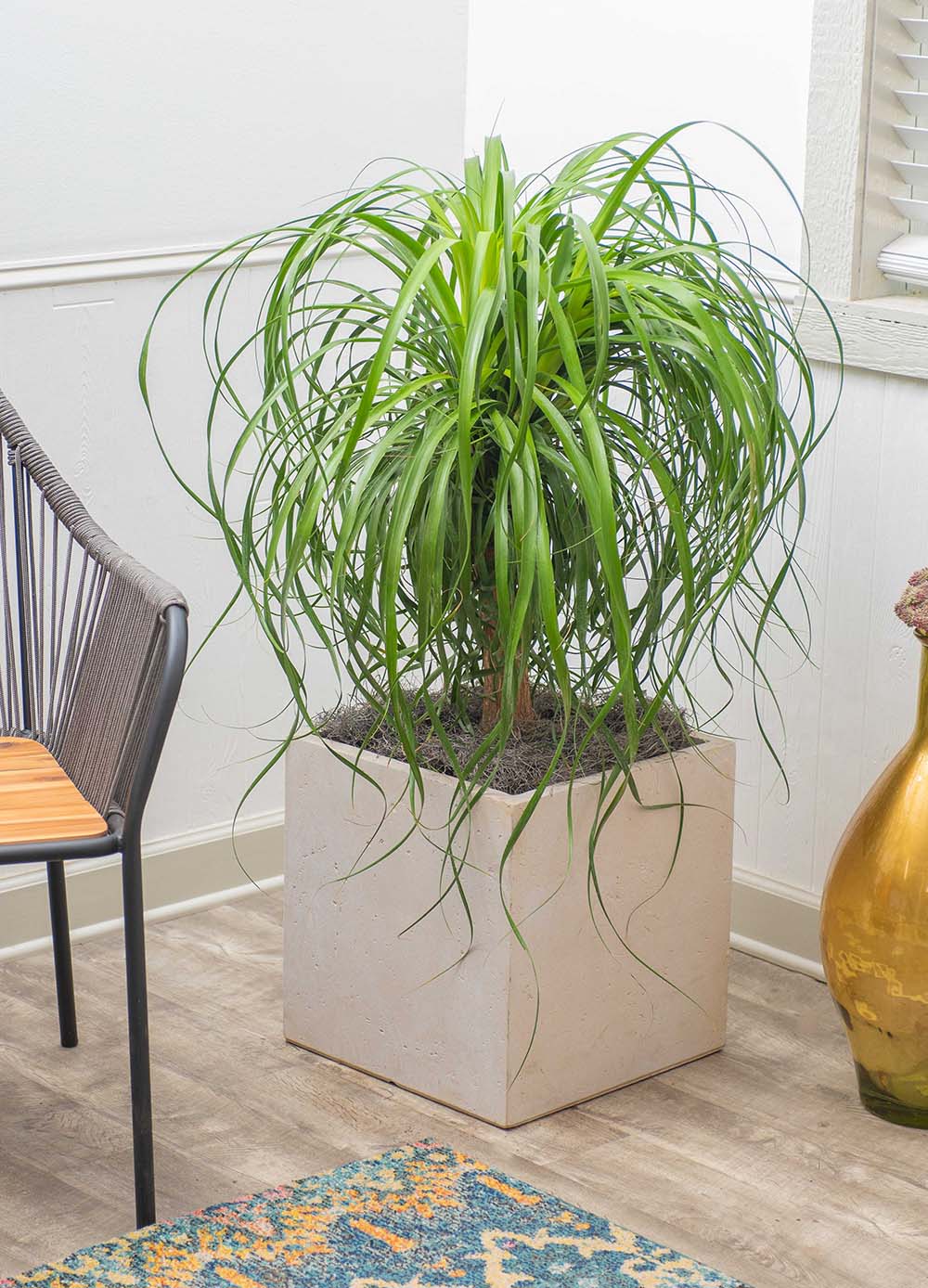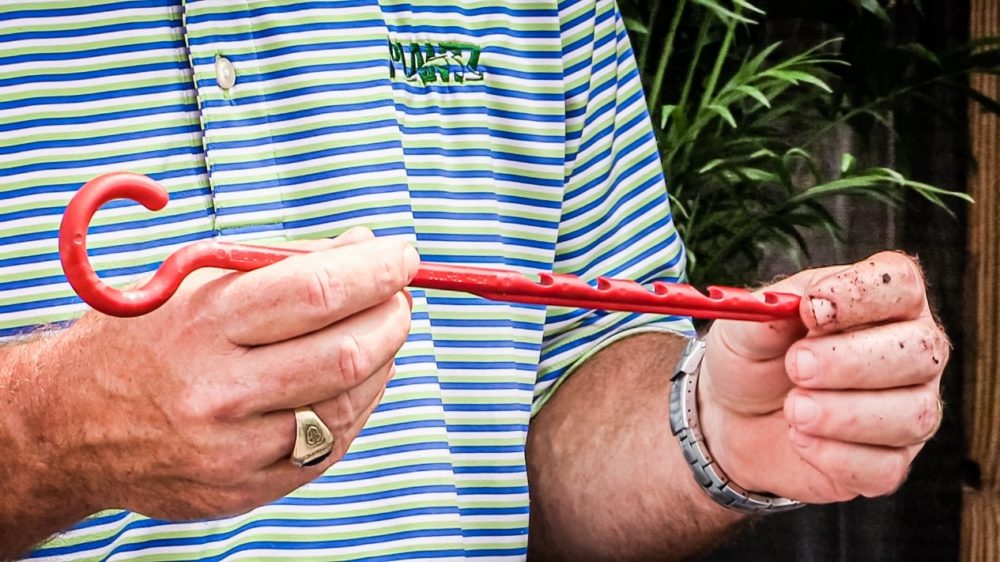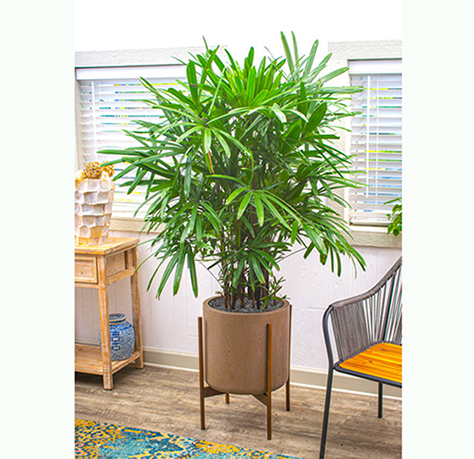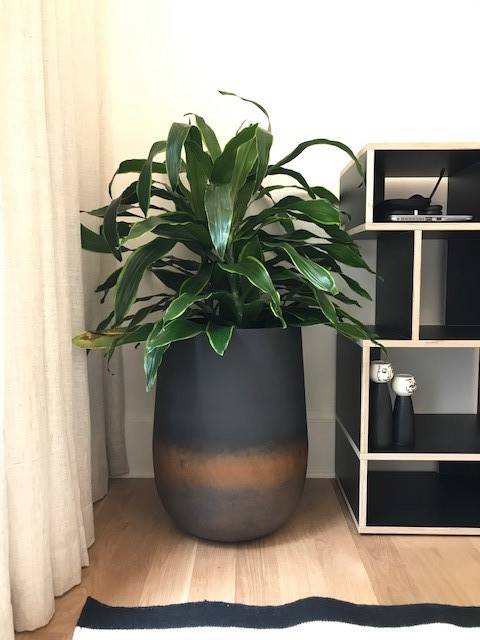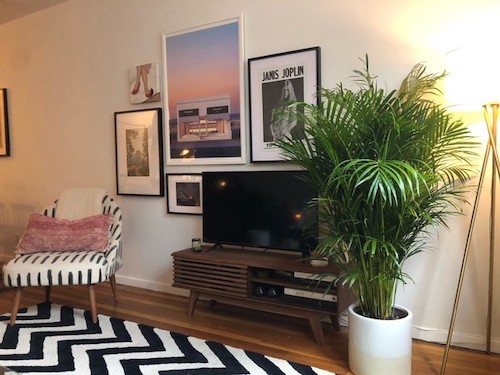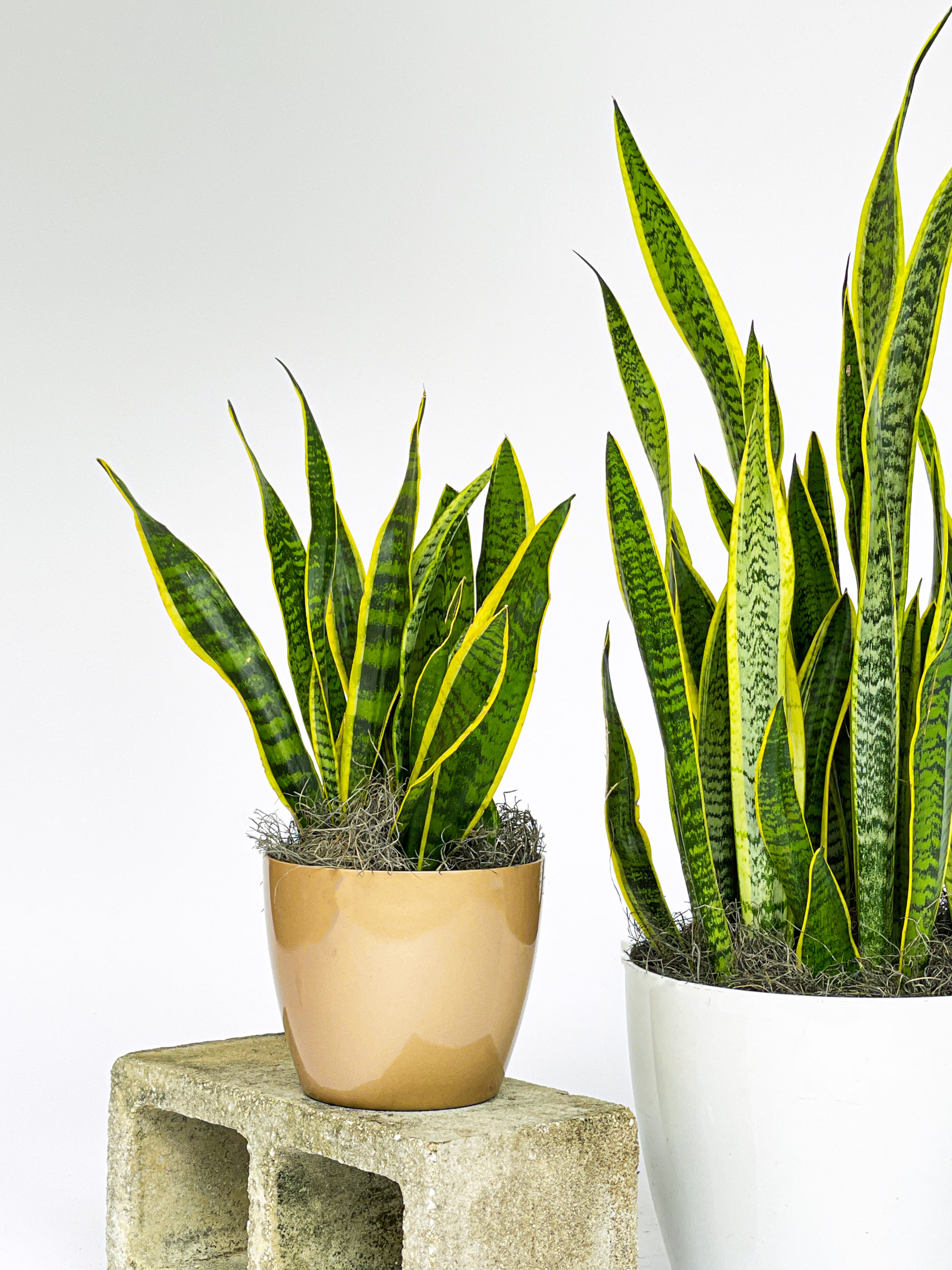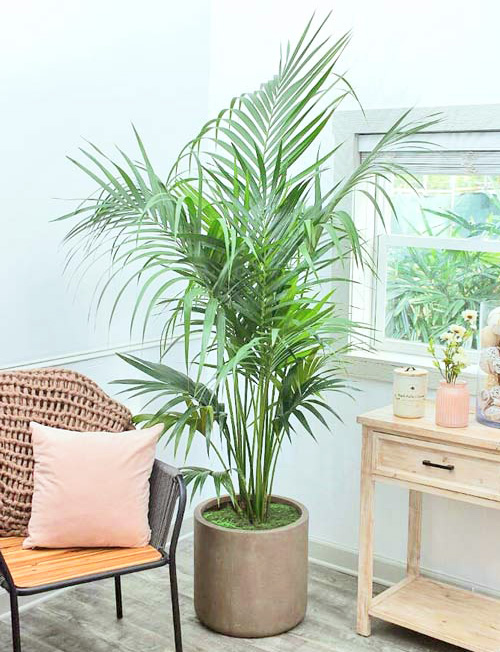For new plant lovers and plant parents, the abundance of different plant choices can be intimidating at times. You might love plants and adore the qualities they bring to your space, but don’t exactly know how to care for them or where to place them in the space you want. In fact, biophilia design actually explains a human tendency to interact or be closely associated with other forms of life in nature! One misunderstanding though, is that you can just pick up any plant and place it anywhere. But in reality, before buying any plant you should do some research about the plant and its placement to make sure this specific plant will thrive. Choosing the right pot and knowing how to clean your plant are all a process in becoming a new plant parent as well. It might be stressful at times, but becoming a plant lover is exciting and will change the way you think about plants.
Low Maintenance Plants= Best friends:
Being a new plant parent, choosing low-maintenance plants will help tremendously with the beginning stages. Buying plants that need a lot of attention and maintenance can be discouraging to new plant parents. It can become overwhelming and make it more of a job rather than a hobby. Starting with an easy plant such as a ZZ plant is a perfect start-up plant because you can just place it in the corner and let the plant work its own magic. Low-maintenance plants are just as beautiful and will let your space transform into something memorable without constant care.
Understand Your Space:
Doing research on not only plants, but your home as well will help you get a better understanding of which plants you are able to put in your desired space. Plan out what space you want to place your plant; figure out which space has the best light and is spacious enough to hold the certain plant you’re looking for. Knowing how much light gets into your home and what spaces will help the needs of your plant is the most crucial step in understanding how to help your plant thrive. Impulse buying is a real thing when it comes to plants and, at times, it is okay. But when you are a new plant parent, doing a little research will help tremendously in the long run to help your plant babies live a healthy life.
Start Your Collection Slow:
Once you become a dedicated plant lover, you will truly see how “addicting” buying and caring for plants can be. It can be an amazing feeling to see beautiful plants all over your home and transform your space into something impactful. But when you are just starting out in the plant-lover community, it is highly recommended to start small and start slow. Start with one plant and see how you do. See how you take care of this one plant and experience how the process works to get an overall feel for plants. If things work out, gradually get another plant or two until you feel comfortable caring for multiple plants at once. This is all a learning process in the beginning so if things get a little overwhelming, it is perfectly normal. That is why we recommend starting out with one plant, so you aren’t attending to four or five plants right away.
The Right Pot Matters:
Some clarification, first, on pots and planters for plants used indoors. A growpot (or just “pot” is the plastic container that holds soil for your plant in which the roots grow. It has several holes in the bottom or bottom/sides that excess water can flow out of. A planter, on the other hand, is the decorative container that you place the growpot in. It can be plastic, fiberglass, ceramic, and even concrete, but whatever its composition, the planter should match your décor and is designed to hide the (relatively unsightly) growpot that your plant was grown in. With few exceptions, growpots have drainage holes; planters should not.
In order for plants to thrive, they need enough room for the roots to expand inside the growpot and uptake the irrigation water. Quality nursery-grown plants should come out of production with the roots making a ‘snug’ fit in the growpot – the roots should push against the sidewalls of the growpot. Too few roots and your plant may not be able to stand on its own; too many roots, and then there’s not enough soil to hold irritating water in the rootzone.
A properly grown plant fit snugly in its growpot can be placed and “staged” in a planter, but be sure to get the right size. Plants grown for indoor use (meaning they’re acclimated in shade houses to withstand lower-light conditions) are usually advertised for sale by the diameter of the growpot and, most of the time, the larger the growpot, the taller the plants. For a typical growpot diameter of ten inches, you’ll want to be sure that the planter for this size has a twelve-inch inside diameter. “Inside” is emphasized because some planter manufacturers will advertise the diameter and it’s actually the outside diameter. The general rule of (green) thumb is to take the size of the growpot, and buy a planter whose inside diameter is at least two inches wider.
For more information on staging and professionally styling a plant and planter, check out this video: Professional Styling a Plant.
Find the Water Balance:
Overwatering and underwatering are problems even “professional” plant parents have trouble with at times. One key to a better understanding of this process is to let your plant “talk” to you. Most plants will tell you when it is time for watering. But if you can’t initially tell, we recommend our “Soil Sleuth” tool. This is a key component of your plant care. The soil probe allows you to gauge the actual soil moisture level and water accordingly.
If the leaves of the plant look droopy, this is also a sign of watering being needed. Underwatering and overwatering can bring “stress” to your plants and ultimately can shorten their lifespan. For all watering tips, check out our Watering Guide to get a better understanding of how to water your next plant!
Plan for Bugs:
Caring for your plants properly doesn’t always prevent some pests from making their home on your houseplants. To help battle this problem, you need to notice this as soon as possible. Always thoroughly checking in on your plant and first glance of something wrong will help you catch the problem before it becomes worse. We recommend spraying the plant with a mild soapy solution and wiping it off. The soap irrigates the bugs and cleans the plant. The wiping action will remove any insects present. A clean plant is a happy plant, and the cleaning process keeps the bugs away too if pests are present. Cutting dead leaves and cutting back longer leaves can help prevent these pests as well. This will give the pests less space to expand on and give you a better view to notice them before they get worse. The key to combating this issue is to not freak out. Pests on plants are nothing new and were part of life before humans lived in houses, but this is an easy fix issue to ensure your plant stays healthy and beautiful.
Experimentation!
Just as being a normal parent and doing everything to keep your child happy, being a plant parent has some of the same responsibilities. Sometimes certain plants aren’t happy where they are initially placed. A change of scenery can make a huge difference in the growth process of your plant. If it isn’t getting enough sunlight, move it to a space where it will get more than enough. If your plant is getting too much sunlight and looks “dry” move it back a little into a new space with a little less light. This process becomes trial and error until you find the perfect spot your plant loves.
Engage with other plant lovers:
You should never be embarrassed to ask for help, especially when you are a new plant parent. Friends, social media groups, nursery employees, and companies that specialize in plants are all resources you should use to further gain your knowledge about being a plant parent. People who specialize in plants and have been doing it for a long time are more than happy to share their knowledge with this process. If you are looking for a company that dedicates its business to ensuring customer satisfaction, Plantz has you covered! Our team is always happy to help you with any knowledge and ideas to help ensure you are ready to become the perfect plant parent.
Frequently Asked Questions:
Do I need to clean my plants?
Cleaning your plants regularly can improve the overall well-being and lifespan of your plants. Plants accumulate dirt and dust if they are not cleaned on a regular basis. If an abundance of dust is present on the plant’s leaves, it can affect the amount of sunlight that is absorbed. This is crucial because this interferes with the plant’s ability to process available light, photosynthesize, and create carbohydrates for growth.
Be sure to be extra careful when cleaning your plants to ensure you don’t rip or tear the leaves of the plant. Spraying and wiping with a light soap solution is the most recommended way to clean your plants. It is important to mention that when you first notice dust and other debris on your plant, you remove it right away. Do not wait until a lot is present, as this will hurt the plant more than help it.
Should you water new plants once you bring them home?
Bringing home a new plant doesn’t mean it needs to be watered right away. If you bought your plant from a reputable company, they will have taken good care of these plants beforehand. Before you jump into watering your new plant, use a Soil Sleuth and always check the soil first. If there is a good amount of moisture still, wait until it is dry to start watering your new plant baby. Overwatering is one of the main causes of plants not living up to their potential. If you still are still unsure, the Soil Sleuth mentioned earlier will be your best friend in this process.
Should you repot plants you just bought?
Newly bought plants should remain in their growpot and placed in a decorative planter. It is very important to not yank the plant out of the grow pot to make sure the roots do not fall apart. Taking plants out of the growpot too soon can cause the following:
- Brown tips
- Drooping Leaves
- Damage to the roots
- Whitling
Introducing the plant to new pots and soil or giving the roots any disturbance can cause your plants to react this way. If you purchased your plant from a reliable source, the plant should have been taken care of just fine to not be repotted for a while, if ever.
How do I become a better plant parent?
Becoming a plant parent brings a new sensation into your life that boosts your overall mood and leaves your space beautiful. The goal of becoming the perfect plant parent is to fully understand your plant. Figure out what your plant likes and doesn’t like, give it attention, and keep it as healthy as possible. Using a Soil Sleuth is the only way to know how dry your plant really is and how much water it needs. If your plant looks like it’s getting scorched by the sun, move it into another space where the plant will be more comfortable. The best thing you can do to become a better plant parent is to be attentive to your plant baby just as you would with a real baby.
What plants should a new plant parent get?
Low-maintenance plants should always be the number one choice for new plant parents. These plants are great because they require minimal care and attention, but also provide your space with something beautiful:
Plants can take a lot of effort to take care of. Making sure you’re watering and giving enough sunlight to your plants can be a hassle at times or become an issue if you are forgetful. If you don’t want to deal with these issues, check out these houseplants that are the easiest to take care of! Put them in any space you wish and watch them grow! Check out plantz.com for your next easy houseplant.
Becoming a new plant parent should be an exciting time, so don’t make it stressful. Plants can become impactful pieces to the space you choose and taking care of them can turn into something fun that you enjoy doing often.
While local nurseries will usually fit the bill, businesses like PLANTZ will exceed your expectations, offering plants of varying sizes in a wide array of containers to fit your décor needs. PLANTZ has professionals that are always ready to help you. From picking out the perfect plant and decorating needs, to giving you knowledge and tips to help you be a successful plant parent in the community. Take these tips into consideration if you are a new plant lover and be sure to visit Plantz.com for your next plant baby!









